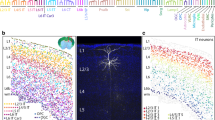Abstract.
This review outlines current views of the principles and mechanisms underlying olfactory signaling, and presents some thoughts on open questions and future perspectives in this field. We briefly introduce the structure and function of the olfactory system and its sensory neurons, which respond to appropriate odorants with distinct patterns of electrical activity and contribute to the phenomenon of odor coding based on their characteristic receptor repertoire and their specific interconnections with target neurons in the brain. The molecular mechanisms mediating the process of chemo-electrical signal transduction in sensory cells and their functional implications are discussed. As a prerequisite for the high sensitivity and fast kinetics of the transduction process, we propose that the functional elements of the transduction cascades are spatially arranged in multimeric complexes, organized by scaffolding proteins, which anchor the signaling networks to the membrane of olfactory sensory cilia.
Similar content being viewed by others
Author information
Authors and Affiliations
Additional information
Electronic Publication
Rights and permissions
About this article
Cite this article
Paysan, J., Breer, H. Molecular physiology of odor detection: current views. Pflügers Arch - Eur J Physiol 441, 579–586 (2001). https://doi.org/10.1007/s004240000492
Published:
Issue Date:
DOI: https://doi.org/10.1007/s004240000492




